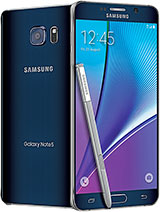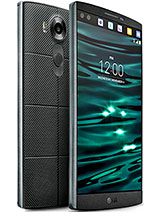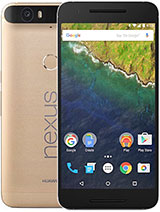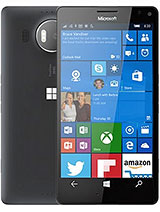Huawei Mate 8 review: Checkmate
Checkmate

Final words
The Huawei Mate 8 may very well be the best 6-inch smartphone you can pick up today. But it is the specific stipulations in that wording that hide a few caveats.
For one, Huawei's largest phablet this season is among a select few flagships that venture past the 5.7-inch mark. And that's another way of saying there aren't any others. So if you want that particular pairing of largest diagonal with current, powerful hardware, the Mate 8 simply is the one phone to get.

However, don't let that make you think that the only reason to get it is lack of options - the Mate 8 makes a very compelling case for itself. It starts with the display, which boasts high contrast and exceptional sunlight legibility for an LCD panel.
Battery life is nothing short of amazing either. The Mate 8 trumps its predecessor's already excellent battery endurance, despite having a vastly more powerful chipset and (marginally) smaller battery capacity. What's more important is that no current competitor in the high-end segment can come anywhere close to its longevity when surfing the web, even if there are those that outlast it in video playback.
We mentioned the chipset, and it is what you would call a beast. Its processor packs all the punch you need and then a lot more. The Cortex-A72 cores are benchmark-toppers, and they also shine in real life, never forcing you to wait for the Mate to catch up with your input.
Not entirely so with the GPU, which is only good enough, but not quite spectacular. Huawei did well to balance things out between display resolution, GPU power and battery efficiency, and we understand it. It's just that in a perfect world the Mate 8 would have had a bit more graphics oomph.
Another aspect of the Mate 8's where we were rooting for "great" and it only managed "okay" was its camera. It started off really bad, but a firmware update during our review brought it to an acceptable state. However, its output is still softer and noisier than we would have liked, and not up to the standard of the segment. It gets worse in video recording, where the lack of 2160p mode is unforgivable and the 1080p videos do little to make up for it, 60fps or otherwise.
Not everyone will love EmotionUI either. Knuckle gestures are fun and could potentially be useful if you take the time to learn what does what, but is it necessary? It's also nice to have a multi-window feature, but what good is it when it only supports a total of 8 built-in apps and no browser?
Huawei Mate 8 key test findings
- Impressive build quality, premium look and feel;
- High-contrast display, which works well in the sun; maximum brightness could have been higher;
- Worldwide LTE support, dual-SIM slots (second one shared with the microSD), solid overall connectivity package;
- Exemplary battery life, 103h endurance rating, record-breaking longevity in our web-browsing test;
- EmotionUI v4.0 is rich in features and strong on customization, but knuckle gestures may be too quirky to actually use. Multi-window feature doesn't support a browser;
- Fingerprint sensor is one the best implementations on the market, always on, blazing fast, and rarely erring;
- Chart-topping CPU performance; GPU isn't quite in the same league, but does the job;
- Built-in multimedia package doesn't leave you wanting, the custom tools look and work well, there's a pre-installed document editor and no bloatware;
- Loudspeaker scored a Below Average mark in our test;
- Excellent audio quality, with both headphones and external amp; loud, too;
- The primary camera produces images which are on the soft side, and can't match the best in terms of detail. It packs plenty of features, though, and shoots very good panoramas;
- The lack of 2160p video recording is made even worse by the only average 1080p output.
We already established that you can't get an actual flagship with a 6-inch display other than the Mate 8. Once you drop the diagonal to 5.7 inches, the list of options gets pretty long.
The current generation of the phablet that made phablets a thing, the Samsung Galaxy Note5 sits on top of that list. It's got a better camera than the Mate 8, but while it does have high endurance numbers, it can't quite match Huawei's offering. It also has an AMOLED screen vs. the Mate's LCD and to some that settles it right there.
The Note5 scores a lot more points for productivity, thanks to the S-Pen and infinitely better implementation of multi-window. It's also made of glass on both sides, and that's a no-no for some users, who reckon it makes it more fragile. The Mate is also the choice for those with big multimedia collections, as it has a microSD slot, which the Note5 lacks.
The LG V10 has a 5.7-inch primary display, but also a ticker on top, so you could consider it larger than the Note5. So, secondary display, tougher build, superior camera, and a removable battery are all in its favor, but actual battery life is a lot shorter, and its chipset isn't nearly a match for the Mate's.
Huawei's Nexus 6P is the better phablet by the Chinese company if you're not a fan of custom OS overlays and like your Android stock. It also has a superior camera and a higher-res display (as the other two above, for that matter). The Mate 8 trumps it in battery endurance.
The Microsoft Lumia 950 XL is another high-end option, albeit outside the Android realm. You may find a pattern here, but the Lumia's camera shoots better images than the Mate's, while Huawei's phablet outlasts it in every single battery test. The Lumia's power pack is removable though, unlike the Mate's. Microsoft's flagship has Continuum going for it (if you can find a use case), but Windows on a mobile phone still remains mostly a fans-only market, deservedly or not.
Now, if you insist on the 6 inches, but you are willing to concede some raw processing power, you could go for the Oppo R7. AMOLED display, comparable battery life, and the same form factor - all for substantially less cash - might just settle it for some. Alternatively, you could wait for the Galaxy A9 (2016) to arrive (we are). Again, a 6-inch AMOLED, 4,000mAh battery and a CPU with the same cores, but clocked lower, sounds promising, even before you know that it's about $200 cheaper than the Mate 8. TouchWiz and glass build could deter a few potential buyers, but then lure others.
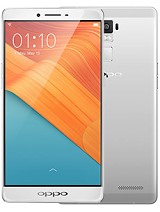
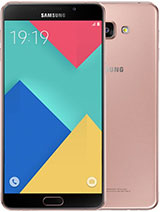
Oppo R7 Plus • Samsung Galaxy A9 (2016)
Great as it may be, Huawei's high-end phablet is not perfect, and you'd better be aware of its flaws, even if you choose to ignore them. The camera could use plenty of improvement, and the Android overlay is a love-it-or-hate-it affair. However, the Mate 8 is an exquisitely built smartphone with killer looks, superior battery life, and a powerful chipset. If only we could have it all.
Reader comments
- AnonD-698812
- 09 Sep 2017
- HKK
How do I roll back to Marshmallow, Andriod 6, from Nougat 7.0 I bought HUAWEI Mate 8 on Andriod 6, however I upgrade to 7.0, which I regretted. My region is UK. Assistance is urgently needed.
- Anonymous
- 22 Jun 2017
- Lxn
Any 3rd party app were I can get more options for the apps available in Multi window?
- Anonymous
- 06 May 2017
- 7{8
my mate 8 is now 1 year and 4 months old but still performs just like before and recieved an update for android 7 nougat hooray,but it's battery drains 15% overnight due to battery wear and tear sad,but still a great phone :)
